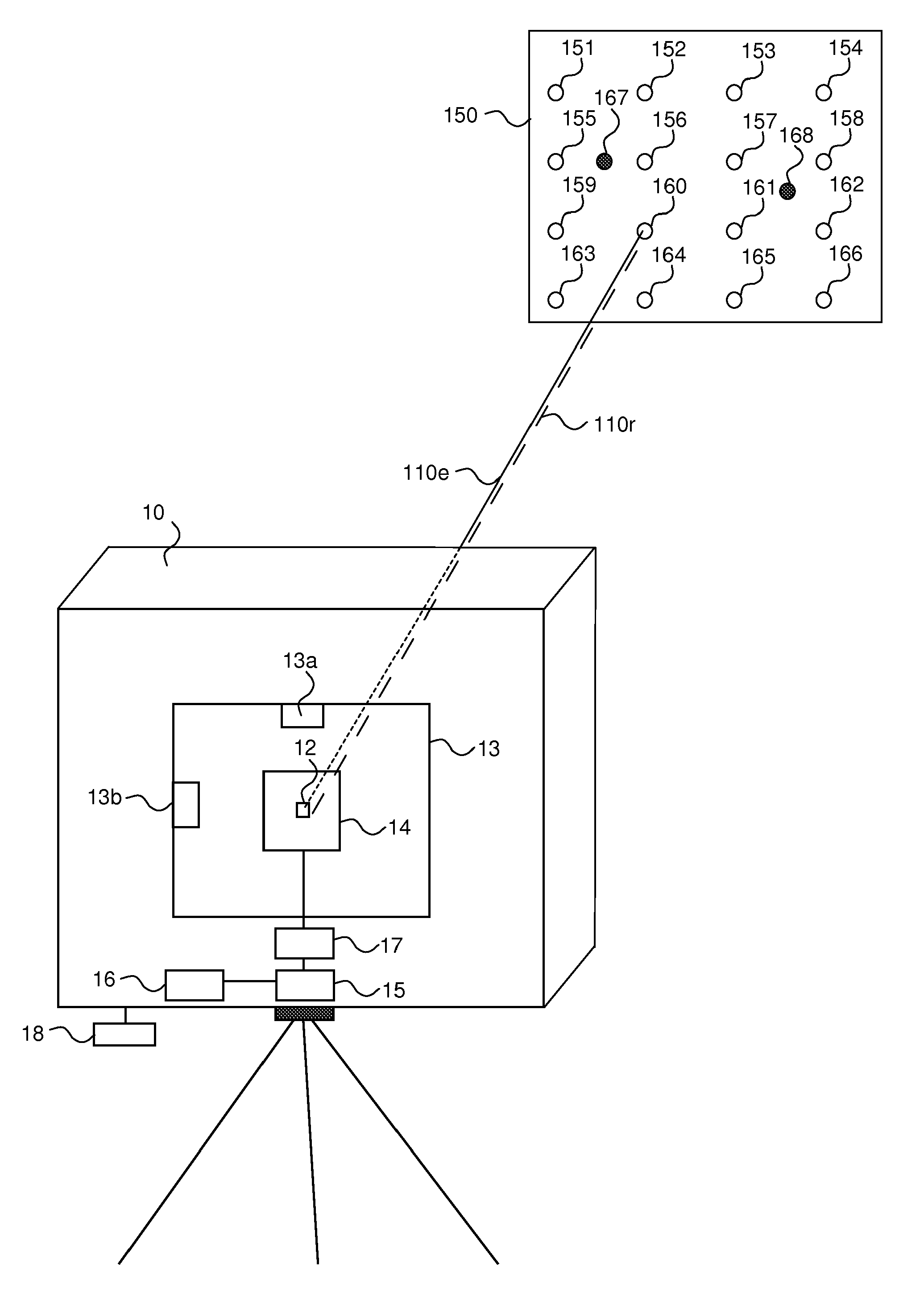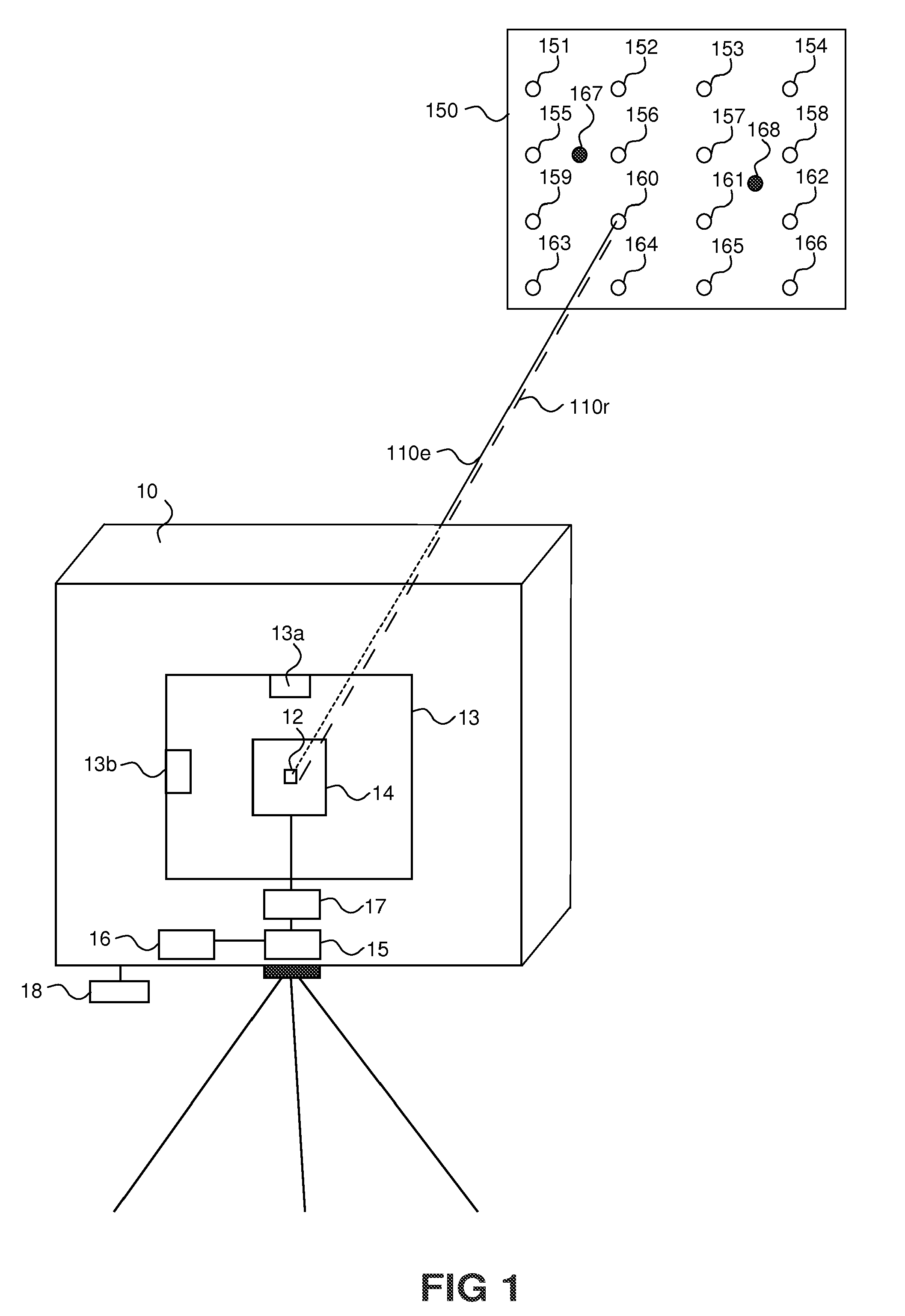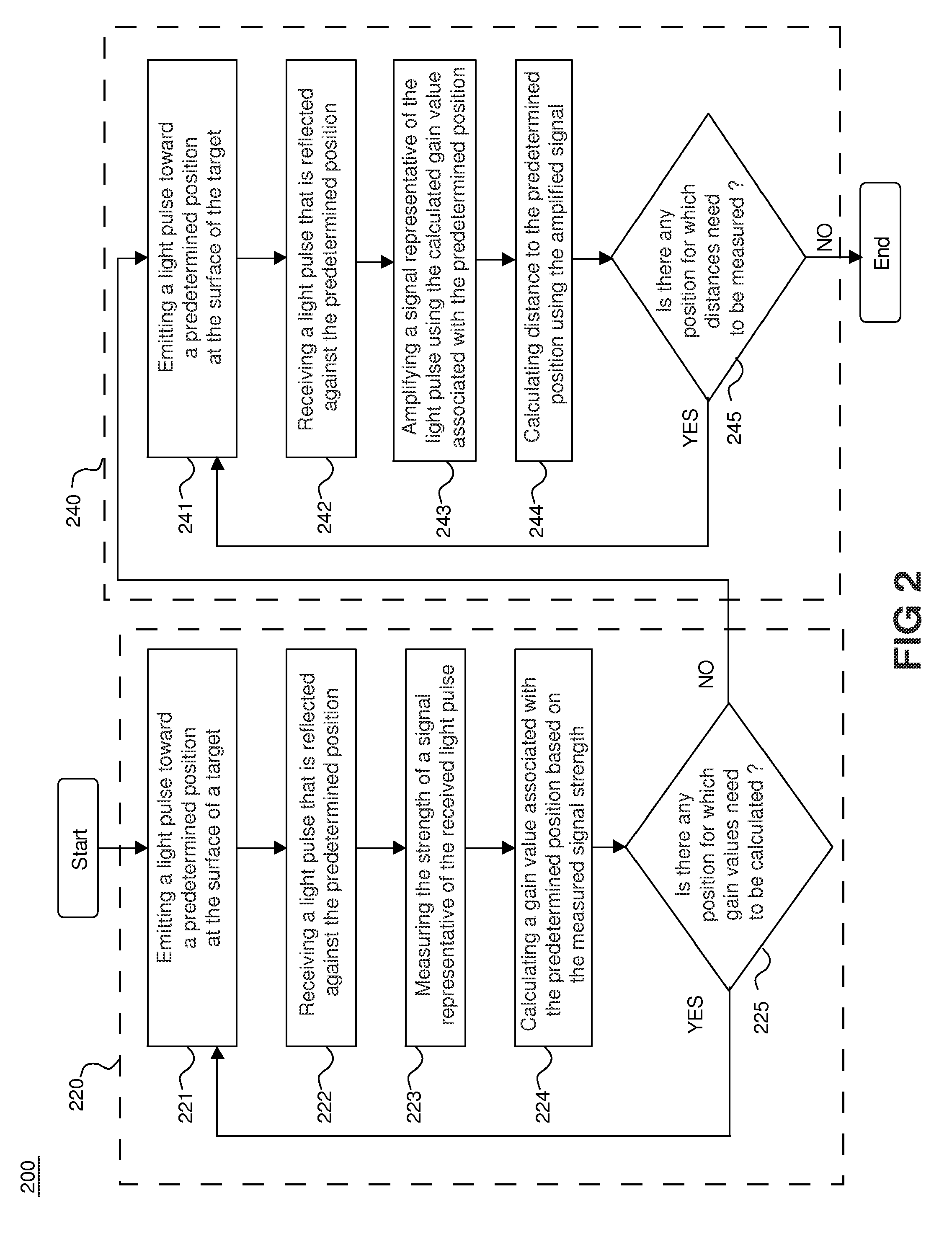Geodetic scanner with increased efficiency
a geodetic scanner and efficiency technology, applied in the field of systems and methods for surveying, can solve the problems of inaccurate distances determined from return signals having a too large or too low power, unnecessary processing of invalid measurements, and inability to achieve alternative, etc., to achieve the effect of reducing the average power that is received by the eye, increasing the overall measurement rate, and reducing the exposure time of the eye per time interval
- Summary
- Abstract
- Description
- Claims
- Application Information
AI Technical Summary
Benefits of technology
Problems solved by technology
Method used
Image
Examples
Embodiment Construction
[0036]With reference to FIG. 1, a geodetic scanner 10 implementing a scanning procedure according to an embodiment of the present invention is described.
[0037]In the present embodiment, the geodetic scanner 10 determines the appearance of a target 150, for example a wall, by scanning over a number of predetermined positions 151-166.
[0038]The number of predetermined positions to be measured may be manually selected by a user, e.g. by entering data via a keyboard 18 of the geodetic scanner 10. For example, the user may select a number of measurements to be performed per angle unit, e.g. one measurement every grad. As another example, the geodetic scanner 10 may comprise a camera (not shown), such as a CCD or a CMOS, for displaying an image of the target to the user who may then select a number of points corresponding to a number of positions at the surface of the target. Alternatively, the user may select a region of interest in the image and enter a desired number of positions. The d...
PUM
 Login to View More
Login to View More Abstract
Description
Claims
Application Information
 Login to View More
Login to View More - R&D
- Intellectual Property
- Life Sciences
- Materials
- Tech Scout
- Unparalleled Data Quality
- Higher Quality Content
- 60% Fewer Hallucinations
Browse by: Latest US Patents, China's latest patents, Technical Efficacy Thesaurus, Application Domain, Technology Topic, Popular Technical Reports.
© 2025 PatSnap. All rights reserved.Legal|Privacy policy|Modern Slavery Act Transparency Statement|Sitemap|About US| Contact US: help@patsnap.com



